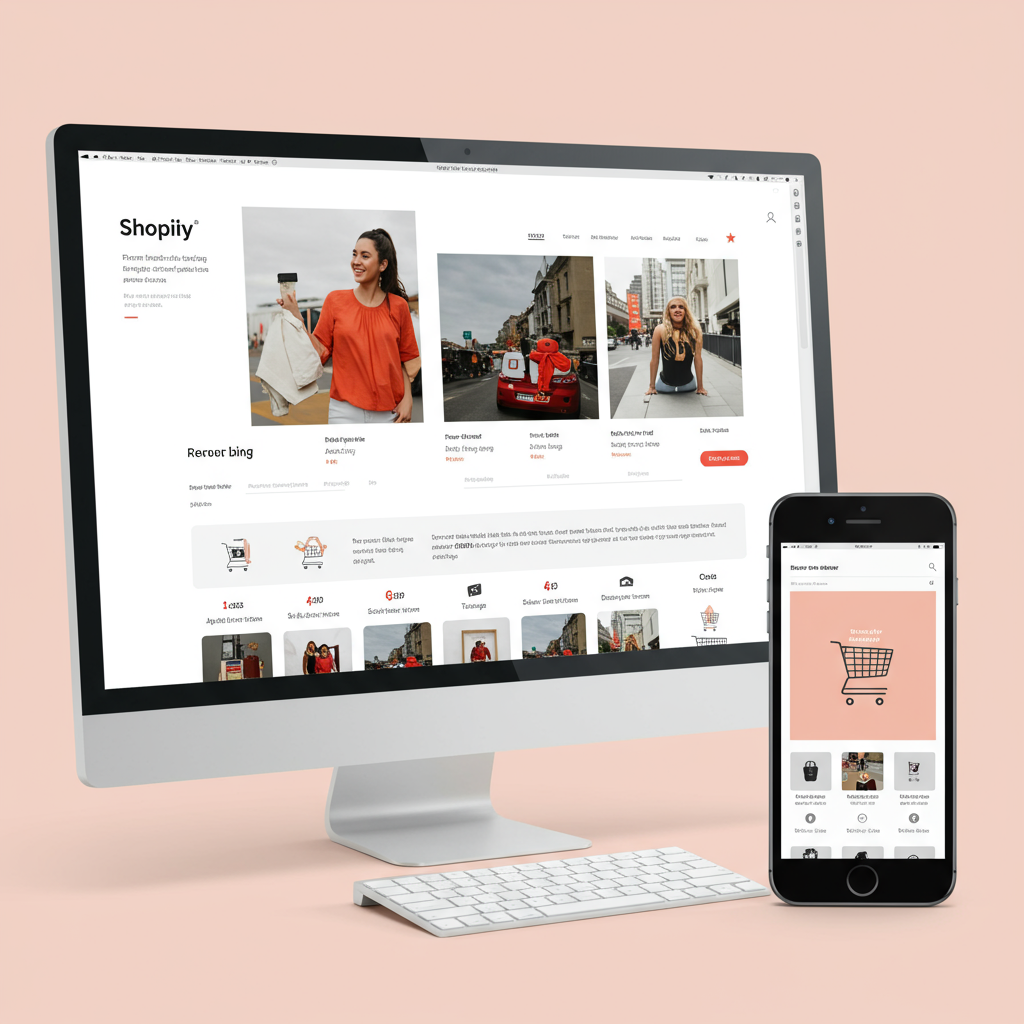My comprehensive guide to creating a high-converting and future-proof homepage for your Shopify store.
As a merchant navigating the ever-evolving landscape of e-commerce, I know firsthand that your Shopify homepage isn’t just a digital storefront; it’s the beating heart of your online business.
In 2025, with competition fiercer than ever, a well-designed homepage is no longer a luxury—it’s an absolute necessity for converting visitors into loyal customers.
My goal today is to share some actionable tips and insights to help you craft a Shopify homepage that not only looks stunning but also performs exceptionally well.
First and foremost, I always emphasize the importance of a strong first impression. Your hero section, the very first thing visitors see, needs to grab attention instantly.
I recommend a high-quality, visually striking image or a short, engaging video that immediately conveys your brand’s essence and unique selling proposition (USP).
Overlay this with a clear, concise headline and a compelling call-to-action (CTA) button. Think ‘Shop Now,’ ‘Discover Our Collection,’ or ‘Learn More.’
Next, let’s talk about navigation. I believe intuitive navigation is paramount. Your main menu should be clean, easy to understand, and guide visitors effortlessly to what they’re looking for.
Consider implementing mega menus if you have a large product catalog, as they can significantly improve user experience by showcasing categories and subcategories clearly.
Mobile-first design is non-negotiable in 2025. I constantly remind myself that a significant portion of traffic comes from mobile devices, so your homepage must be perfectly responsive.
Test your site rigorously on various screen sizes to ensure a seamless experience for every visitor. Speed is another critical factor I can’t stress enough.
A slow-loading homepage will deter potential customers faster than anything else. I always advise optimizing images, minimizing app usage, and choosing a lightweight theme.
Now, let’s delve into content. I find that showcasing your best-selling products or new arrivals prominently on the homepage is incredibly effective.
Use high-quality product photography and concise descriptions to entice clicks. Grouping products into curated collections also helps guide the customer journey.
Social proof is a powerful persuader. I always recommend integrating customer reviews, testimonials, and trust badges directly onto your homepage.
Seeing that others have had positive experiences builds immediate credibility and trust with new visitors. It’s a silent salesperson working for you.
Don’t forget your brand story. I believe customers connect with brands that have a purpose. A small section dedicated to ‘Our Story’ or ‘Why Choose Us’ can foster a deeper connection.
This is where you can highlight your values, mission, or the unique journey that led to your brand’s creation. It humanizes your business.
For 2025, I’m seeing a huge shift towards personalization. Leveraging AI-powered apps to display personalized product recommendations based on browsing history can significantly boost conversions.
Think about interactive elements too. I’ve seen great success with quizzes that help customers find the perfect product or configurators for custom items.
Video content is also on the rise. A short, engaging brand video or product demonstration can convey more information and emotion than static images alone.
I also encourage merchants to think about accessibility. Ensuring your homepage is usable by everyone, including those with disabilities, is not just good practice—it’s essential for inclusivity.
Consider adding a blog section or recent articles to your homepage. I find this not only helps with SEO but also positions your brand as an authority in your niche.
Finally, I always include a clear call to action for email list sign-ups. An embedded form or a well-timed pop-up can be invaluable for future marketing efforts.
Your footer, while often overlooked, is crucial. I ensure it contains essential links like contact information, FAQs, shipping policies, and social media links.
Regularly analyze your homepage’s performance using Shopify Analytics and tools like Google Analytics. I use this data to identify areas for improvement and conduct A/B tests.
What do you think about these tips? Are there any strategies you’ve found particularly effective for your Shopify homepage?
By continuously optimizing and adapting your homepage to evolving trends and customer behavior, you’ll ensure it remains a powerful engine for your Shopify store’s success in 2025 and beyond.
Remember, your homepage is a living entity; it should evolve with your business and your customers’ needs. I believe in constant iteration.
Investing time and effort into these design principles will undoubtedly pay dividends in terms of engagement, conversions, and ultimately, your bottom line.






